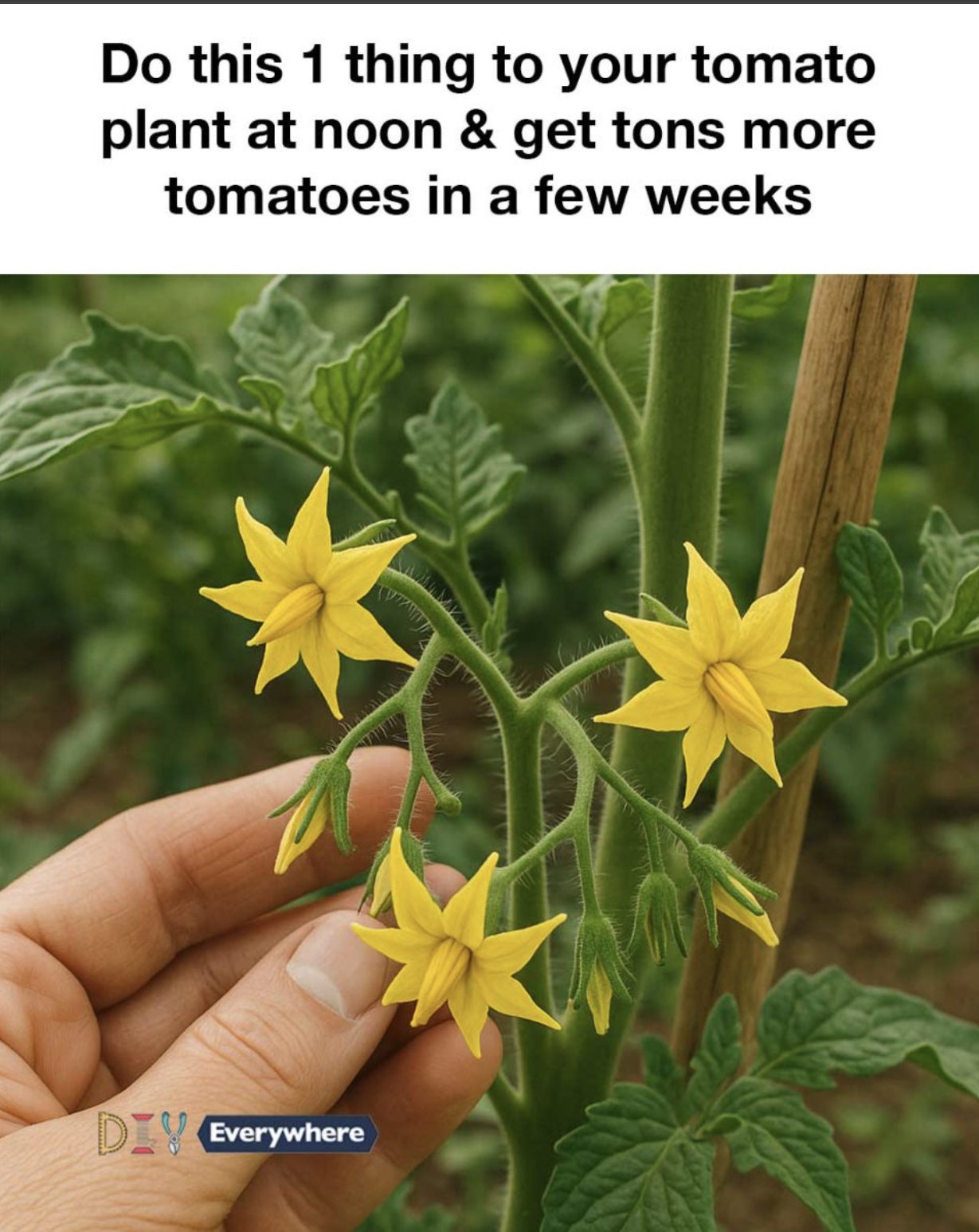Unlocking a Bountiful Tomato Harvest: The Noon Buzzing Technique
Tomatoes are a beloved garden staple, but achieving a truly abundant harvest often feels elusive. While factors like soil quality and sunlight are crucial, there’s a surprisingly simple technique that can significantly boost your yield: the noon buzzing method. This technique, inspired by the natural pollination process of bees, involves gently vibrating your tomato blossoms at midday to maximize pollen transfer and fruit set.
Understanding the Noon Buzzing Technique
The noon buzzing technique leverages the midday peak of pollen viability. At noon, the sun’s warmth dries the pollen, making it easier to transfer, and the flowers are fully open, maximizing the surface area for pollination. This mimics the natural buzzing of bees, which effectively dislodges and distributes pollen, resulting in increased fertilization.
The Science Behind the Buzz
Tomatoes are self-pollinating, meaning they possess both male (anther) and female (stigma) reproductive parts within the same flower. However, they often benefit from external assistance to facilitate efficient pollen transfer. The vibration from buzzing, whether from a bee or an electric toothbrush, shakes the pollen loose from the anther, increasing the likelihood of successful pollination and fruit development.
Tools and Techniques: How to Buzz Your Tomatoes
For this simple yet effective technique, you’ll need a small, handheld vibrating device. An electric toothbrush is an ideal choice, offering gentle vibration without damaging the delicate flowers. A soft-bristled brush or cotton swab can also be used to manually transfer pollen if necessary.
Step-by-Step Guide to Buzzing Your Tomato Plants
- Timing is Key: Perform the buzzing around noon when the flowers are fully open and the pollen is most viable.
- Choose Your Tool: Select your electric toothbrush or other vibrating device. Ensure it has a soft tip.
- Gentle Vibration: Gently touch the back of each flower with the vibrating tool, holding it in place for a few seconds.
- Thorough Application: Repeat this process for every flower cluster, ensuring all flowers receive attention.
- Manual Assistance (Optional): If necessary, use a small brush or cotton swab to assist in transferring pollen.
Consistency is key. Buzz your plants every few days during the peak flowering period for optimal results.
Beyond Buzzing: Complementary Practices for Abundant Tomatoes
While buzzing significantly enhances pollination, combining it with other best practices will further optimize your tomato yield.
Pruning for Improved Growth
Regular pruning removes excess foliage and suckers, allowing the plant to focus its energy on fruit production. It also improves air circulation, reducing the risk of fungal diseases.
Sunlight Exposure: The Key to Photosynthesis
Tomatoes need at least 6-8 hours of direct sunlight daily. Ensure your plants receive ample sunlight, supplementing with grow lights if necessary for indoor or greenhouse cultivation.
Watering Techniques for Healthy Plants
Water deeply but infrequently, allowing the soil to dry slightly between waterings to promote deep root growth and prevent root rot. Drip irrigation is an efficient method.
Nutrient-Rich Soil: The Foundation of Success
Use nutrient-rich soil amended with compost or well-rotted manure. Regular fertilization with a balanced formula provides the essential nutrients for robust growth and abundant fruit production.
Common Mistakes to Avoid
Avoid excessive pressure or vibration when buzzing, which can damage the flowers. Regular buzzing is essential; don’t neglect it during the peak flowering period.
Reap the Rewards: A Bountiful Tomato Harvest Awaits
By incorporating the noon buzzing technique and these complementary practices, you’ll be well on your way to enjoying a truly exceptional tomato harvest. So grab that electric toothbrush, head to your garden at noon, and get ready to witness the magic of the buzz!
